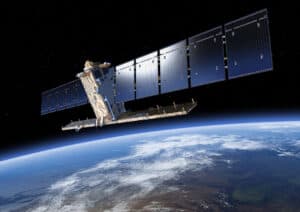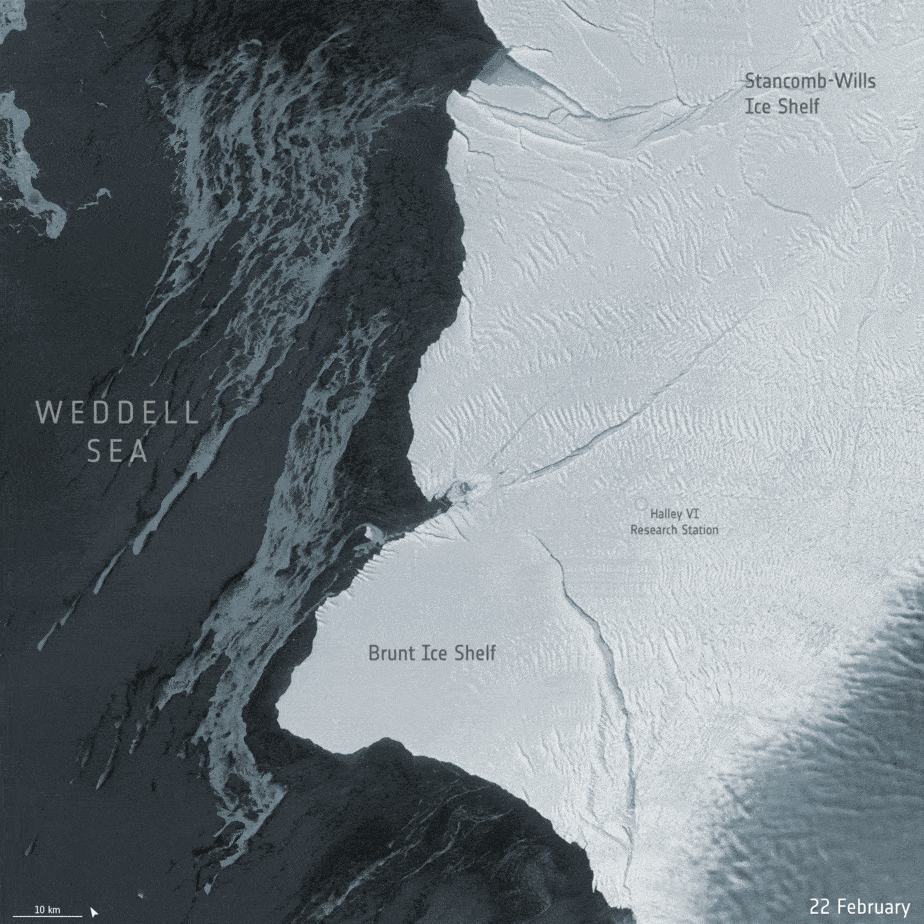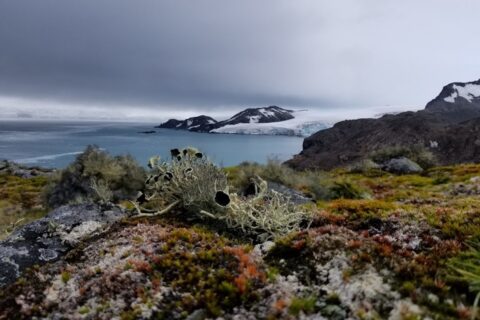
A giant iceberg, almost the size of Los Angeles, broke off from the northern section of Brunt Ice Shelf in Antarctica on Friday 26th February. New radar images, captured by the European Space Agency (ESA) Copernicus Sentinel-1 mission, showed the 1270sq km iceberg ‘calving’ — breaking free and moving away rapidly from the floating shelf.
Glaciologists have been monitoring closely the many cracks and chasms that have formed in the 150m thick Brunt Ice Shelf over the past few years. In late-2019, a new crack was spotted in the portion of the ice shelf north of the McDonald Ice Rumples, heading towards another large crack near the Stancomb-Wills Glacier Tongue.
This latest rift was closely monitored by satellite imagery, as it was seen quickly cutting across the ice shelf. Recent ice surface velocity data derived via Sentinel-1 indicated the region north of the new crack to be the most unstable — moving around 5m per day. Then, in the early hours of Friday 26th, the newer crack widened rapidly before finally breaking free from the rest of the floating ice shelf.
Commenting on the breakaway ice, Head of the Earth & Mission Science Division at the ESA, Mark Drinkwater said:
“Although the calving of the new berg was expected and forecasted some weeks ago, watching such remote events unfold is still captivating. Over the following weeks and months, the iceberg could be entrained in the swift south-westerly flowing coastal current, run aground or cause further damage by bumping into the southern Brunt Ice Shelf. So we will be carefully monitoring the situation using data provided by the Copernicus Sentinel-1 mission.”
Although currently unnamed, the iceberg has informally been dubbed ‘A-74’. Antarctic icebergs are named from the Antarctic quadrant in which they were originally sighted, then a sequential number, then, if the iceberg breaks, a sequential letter.
The calving does not pose a threat to the currently unmanned British Antarctic Survey’s Halley VI Research Station, which was re-positioned in 2017 to a more secure location after the ice shelf was deemed unsafe.
Routine monitoring by satellites offers unprecedented views of events happening in remote regions like Antarctica, revealing how ice shelves manage to retain their structural integrity in response to changes in ice dynamics, air and ocean temperatures. The Copernicus Sentinel-1 mission carries radar, which can return images regardless of day or night — allowing year-round viewing, which is especially important through the long, dark, austral winter months.
Further Reading:
- More about the ESA in general; and its Earth Observation Programmes, in particular;
- Background on the Brunt Ice Shelf;
- View an ice velocity map of the Brunt and Stancomb-Wills Ice Shelf;
- More about the British Antarctic Survey’s Halley VI Research Station;
- Also on SustMeme, News: Crowdsourcing AI to fight deforestation using satellite imagery;
- Also on SustMeme, Guest Blog: How cutting short car trips helps save ice caps.
>>> Do you have sustainability news to broadcast and share? If you would like to see it featured here on SustMeme, please use these Contact details to get in touch and send us your Press Release for editorial consideration. Thanks.







